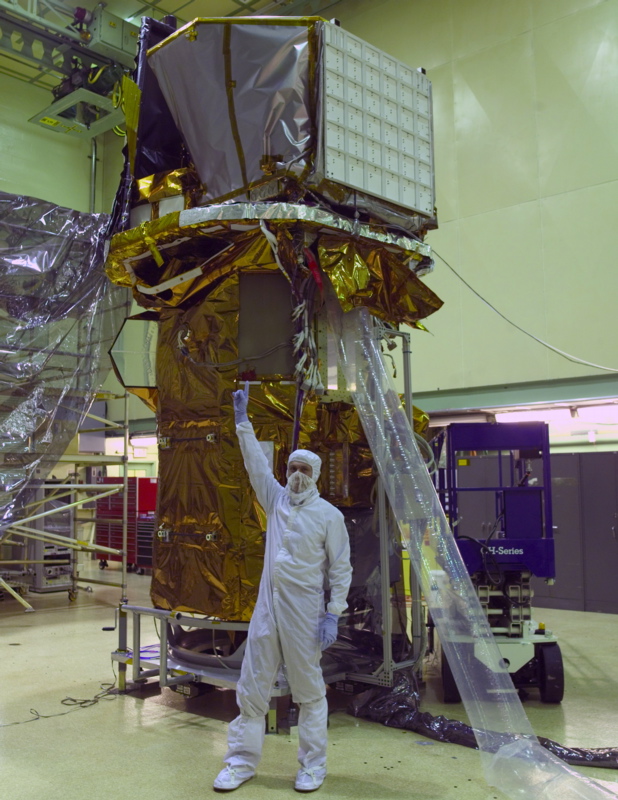
 Credit: NASA
Credit: NASA
A Race to the Swift
How do you catch a flash? Answer: Look quick. That's the prime motivation of astronomers who are trying to understand the most powerful flashes in the Universe, gamma-ray bursts. Quick response is a key requirement, and that's the key characteristic of the next gamma-ray burst telescope, named, appropriately enough, Swift. The picture above shows the Swift observatory after installation of its prime instrument, the Burst Alert Telescope (BAT). The BAT will quickly find and localize GRBs, while Swift's X-ray Telescope (XRT) and the Ultraviolet/Optical Telescope (UVOT) will use X-ray and lower energy emission to pinpoint the burst for followup observations by ground-based telescopes. A unique property of the Swift mission is that data from Swift will be immediately available to astronomers on the ground so that followup observations can begin as soon as feasible after the burst is discovered. Swift is scheduled to be launched in the fall of 2004.
Last Week *
HEA Dictionary * Archive
* Search HEAPOW
* Education
Each week the HEASARC
brings you new, exciting and beautiful images from X-ray and Gamma ray
astronomy. Check back each week and be sure to check out the HEAPOW archive!
Page Author: Dr. Michael F. Corcoran
Last modified Tuesday, 27-Feb-2024 10:13:31 EST


